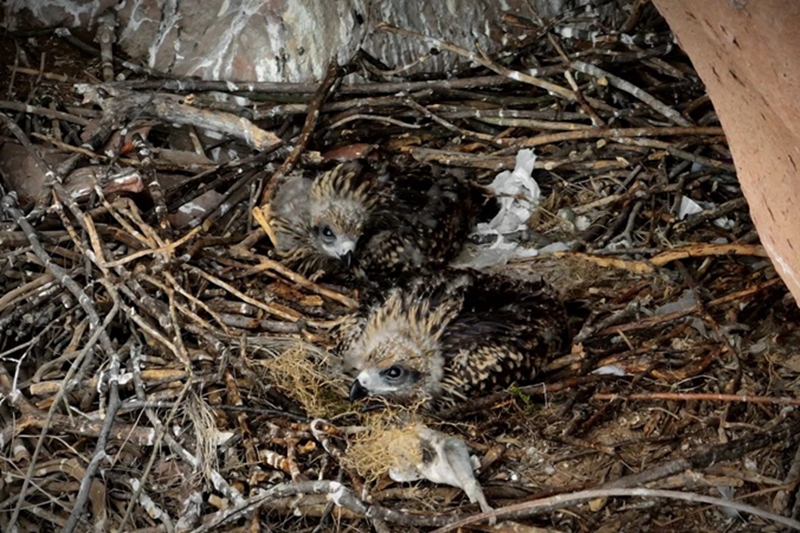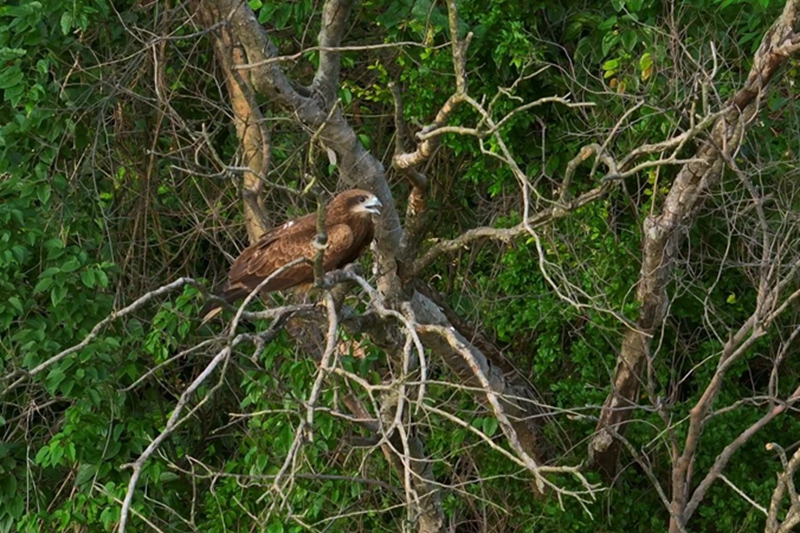This bird made Shaoguan widely known again
On the first National Ecological Day, the nature micro-documentary "Danxia Black Kite" from Shaoguan, northern Guangdong, aired on Xinhua News Agency and CCTV News, presenting a magnificent image of "Eagles cleaved the sky, fish swimming in the clear water, all creatures competing for freedom in frosty weather" to the audiences all over the country.

An adult male black kite hovered over the red cliffs, keeping a close eye on everything that was happening on the ground. More than 280 square kilometers of the Danxia Mountain National Nature Reserve are located beneath it. Despite being a wild bird of prey, the top aerial predator takes the Lingnan region as its ideal place breed.

The documentary filmmaker named Shi Chuan stated, “I've always been fascinated by the topic of wildlife. A black kite unintentionally entered the camera during a unplanned filming. We exchanged long glances, and it seemed as though a certain level of implicit understanding had now been reached. I tracked and photographed black kites in Danxia Mountain area for three months, from early March to early June 2023, as a result of which I have this film.”

The black kite's breeding season falls during this time. The photographer captured priceless footage of the black kites nesting, hunting, and feeding, as well as the entire growth cycle of the young, from breaking out of the egg to growing larger and eventually taking flight. Everything thrives freely in this symbiotic region of red mountains and clear water where human eyes cannot easily reach.

According to Professor Wang Yingyong of Sun Yat-sen University's School of Life Sciences, the black kite, which is a medium-sized bird of prey and a member of the eagle family, is a national second-class protected species. The black kite prefers to prey on aquatic animals like fish and crabs and is reliant on large bodies of water. Danxia Mountain has abundant water resources, and the Jinjiang and Zhenjiang rivers give it plenty of food. In addition, the black kite prefers to breed and build its nest on cliffs. Additionally, the Danxia landscape's caves and stone niches offer a favorable habitat setting. The black kite race was able to flourish in Danxia Mountain in this way, and it was experiencing relatively rapid growth. The Danxia black kite's population is currently increasing steadily each year. It was a spectacular sight to see nearly 40 black kites circling simultaneously in the Danxia Mountain Nature Reserve during the first half of last year.

Danxia Mountain is hosting the 2023 National Ecological Day Danxia Mountain National Park Establishment National Park Scientific Expedition Report today. At the meeting, experts and academics from the Sun Yat-sen University Danxiashan Biodiversity Research Project Team and the Guangdong Geological Survey Danxiashan Geological and Geomorphological Research Project Team presented the status of the research project for the Danxiashan National Park. Moreover, the outcomes of ecological conservation of Danxia Mountain were discussed in terms of the co-evolution of its flora and geological lithology, the sustainable exploitation and knowledge transmission of its wildlife resources, and the characteristics of its wildlife diversity.

Danxia Mountain, the ecological pearl of Lingnan, is where the Danxia landforms are named, and it has recently engaged in successful ecological protection work. Currently, Danxia Mountain has established teaching practice and scientific research cooperation with 30 universities and scientific research institutions, including Sun Yat-sen University, conducted extensive investigation and research on Danxia Mountain's geological landform, biodiversity, cultural heritage, and other resources, and established a complete and systematic and orderly scientific research system, which strongly supports the ecological conservation of the mountain. Danxia Mountain is home to 2,270 species of higher plants, as well as 1516 insect species and over 100 species of spiders as of December 2022. There are 265 species of birds, 29 species of amphibians, 72 species of reptiles, 47 species of mammals, more than 50 species of fish, and 463 species of vertebrates. There are also 300 species of large fungi. Currently, 39 new species have been found and named in Danxia Mountain, the majority of which are extremely small endemic populations found only here.


